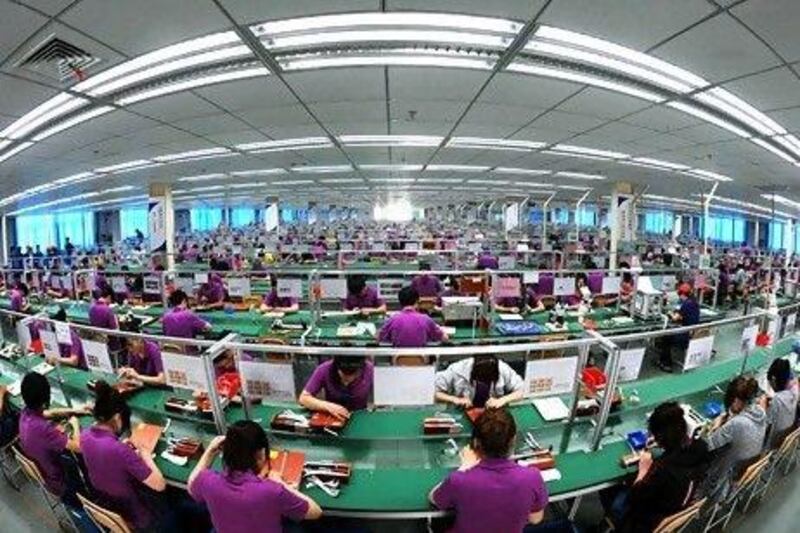China's 12th five-year plan calls for a shift in the country's economic model from export-led growth towards greater reliance on domestic demand, particularly household consumption.
Since the plan's introduction, China's current account surplus as a share of GDP has indeed fallen. But does that mean China's adjustment is on track?
According to the IMF, the fall in China's current account surplus/GDP ratio has largely been the result of high levels of investment, a weak global environment and an increase in prices for commodity imports that has outpaced the rise in prices for Chinese manufactured goods. So the fall in China's external surplus/GDP ratio does not represent economic "rebalancing"; on the contrary, the IMF predicts the ratio will rebound next year and approach its pre-crisis level thereafter.
Experience suggests China's external position is highly sensitive to global conditions, with this ratio rising during boom times for the world economy and falling during slumps. Europe's malaise has hit China's exports badly and is the most important factor underlying the current decline in the ratio.
By definition, without a change in the saving gap, there will be no change in the trade surplus and vice versa. Furthermore, the saving gap and trade balance interact with each other constantly, making them always equal.
In response to the global financial crisis in 2008, China introduced a 4 trillion yuan (Dh2.33tn) stimulus package. While the increase in investment reduced the saving/GDP ratio, the resulting increase in imports lowered the trade surplus/GDP ratio. As a result, China's external surplus/GDP ratio fell significantly in 2009.
In 2010, China's government adjusted its economic policy. To control inflation and property bubbles, the central bank tightened monetary policy and the government refrained from another round of fiscal stimulus.
China's property investment accounted for 10 per cent of GDP and slower investment growth in the sector necessarily reduces import demand.
But, because the fall in import growth had yet to turn into a rout, while China's exports to Europe plummeted, its current account surplus fell further in GDP terms last year.
This situation is likely to change this year. The negative impact of the fall in property investment since 2010 has been deeper and longer than expected; almost all categories of imports that fell by 10 per cent or more in August were related to property investment.
As a result, it is possible the fall in investment growth will reverse the declining external surplus/GDP ratio this year, unless the global economy deteriorates further and/or the Chinese government launches a new stimulus package.
Perhaps most importantly, China must now export more manufactured goods to finance imports of energy and mineral products.
The IMF underestimates China's progress in rebalancing. In my view, this is more genuine - and more fundamental - than the IMF recognises and the prediction of an eventual rebound in the country's external surplus/GDP ratio will most likely turn out to be wrong.
First, the real exchange rate appreciation since 2005 of about 30 per cent must have had a serious impact on exporters, reflected in the bankruptcy - as well as the upgrading - of many enterprises in coastal areas.
Although the market shares of Chinese exports seem to have held up quite well, this is attributable to price-cutting in foreign markets, which is not sustainable. Over time, real exchange rate appreciation will cause a shift in expenditure, making China's rebalancing more apparent.
Second, China's wage levels are rising rapidly. According to the 12th five-year plan, the minimum wage should grow by 13 per cent per year. Together with real appreciation, the increase in labour costs is bound to weaken the competitiveness of China's labour-intensive export sector.
Third, China has made significant progress in building its social security system. The number of people covered by basic old age insurance, unemployment insurance, workers' compensation and maternity insurance has risen substantially.
Moreover, universal medical insurance is emerging and a comprehensive system for providing aid to students from poor families has been established.
As a result, the motivation for precautionary saving has been weakened somewhat, while some researchers have found evidence the consumption rate is rising, which is supported by China's emergence as the world's fourth-largest importer of luxury goods.
Finally, the worsening of China's terms of trade will play an even more fundamental role in reducing its trade surplus in the future. Given weak demand, Chinese exporters must accept increasingly thin profit margins to maintain market share.
However, China's large size and low per capita income and capital stock imply continued rapid growth in its demand for commodities.
In short, as long as China's government is not so unnerved by the slowdown in output growth that it changes its current policy stance, the current account surplus is more likely to continue to fall relative to GDP than it is to rebound next year and thereafter.
In fact, such an outcome is not only likely, but also desirable. After all, faced with infinite quantitative easing, being a large net creditor means being in the worst position in today's global economy.
Yu Yongding was the president of the China Society of World Economics and a director of the Institute of World Economics and Politics at the Chinese Academy of Social Sciences. He was also a member of the monetary policy committee of the People's Bank of China and a member of the national advisory committee of China's 11th five-year plan
* Project Syndicate





